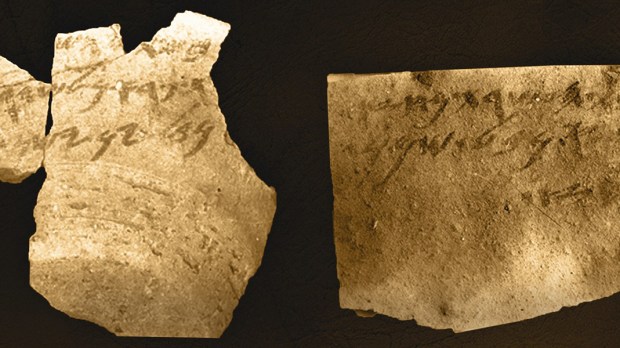Lenten Campaign 2025
This content is free of charge, as are all our articles.
Support us with a donation that is tax-deductible and enable us to continue to reach millions of readers.
Over 100 years ago, archaeologist George Andrew Reisner stumbled upon a treasure trove of more than 100 pottery fragments, which were covered in Hebrew script. Dated between 850 BC and 750 BC, these “Samaria ostraca” seemed to experts to be inscribed simply with names and addresses for the shipment of goods. Now a new technology has shown them to bear greater significance.
A multidisciplinary team of experts from Tel Aviv University (TAU) has conducted a study of the “Samaria ostraca” fragments utilizing brand new handwriting analysis technology. In a study, published on the TAU website, they determined that 31 of the fragments bore the handwriting of just two individuals.
This revelation seems relatively inconsequential, but Sight Magazine reports that it has provided new insights into the organization of ancient Israel’s infrastructure. Professor Israel Finkelstein, one of the study’s researchers, wrote:
“If only two scribes wrote the examined Samaria texts contemporaneously and both were located in Samaria rather than in the countryside, this would indicate a palace bureaucracy at the peak of the kingdom of Israel’s prosperity.”
Their findings also give clues as to the literacy in the region during the 8th century BC. Professor Eli Piasetzky, another of the study’s authors, noted that the existence of only two writers on so many of the pieces suggests that literacy was limited. This seems to contradict a 2016 study by the same team, which found literacy to be quite common in the 6th century BC. This suggests that education had flourished during the 200-year period. The study explained:
“It seems that during these two centuries that passed between the composition of the Samaria and the Arad corpora, there was an increase in literacy rates within the population of the Hebrew kingdoms.”
Shira Faigenbaum-Golovin, lead researcher of the study, was thrilled with the effectiveness of the new technology. She believes that its use in other archaeological cases could provide key evidence to better understand our history, both in Israel and abroad. She told Sight Magazine:
“The innovative technique can be used in other cases, both in the Land of Israel and beyond. Our innovative tool enables handwriting comparison and can establish the number of authors in a given corpus.”

